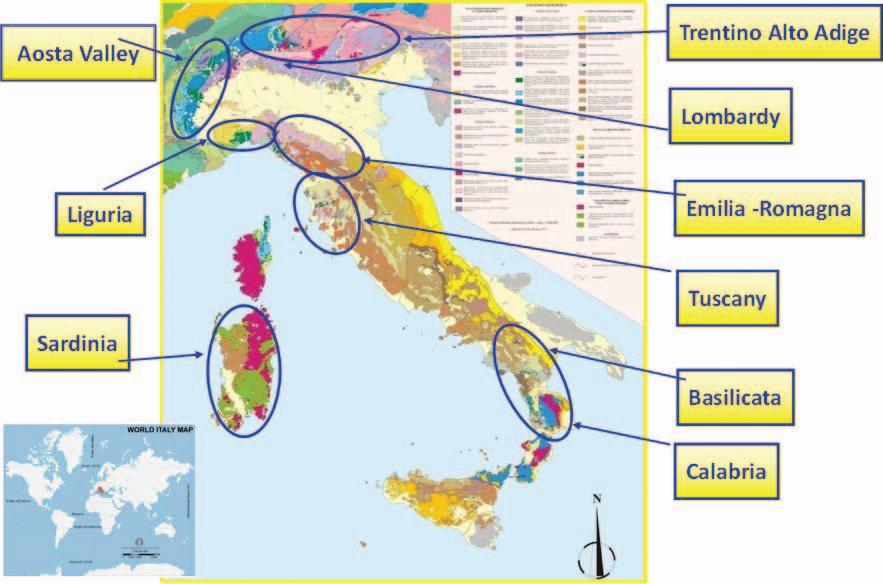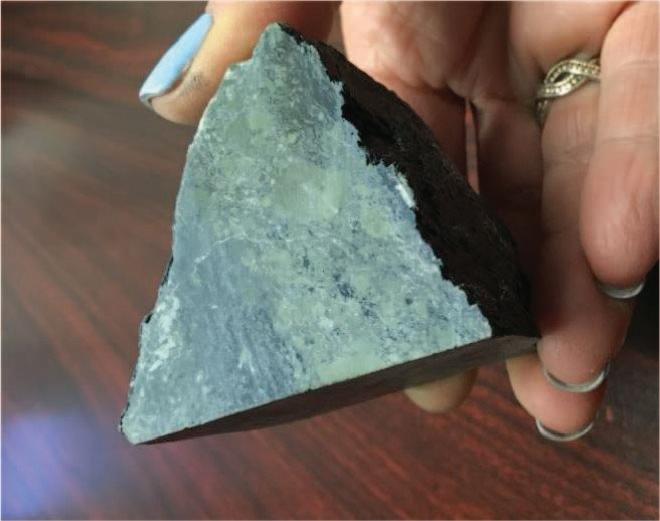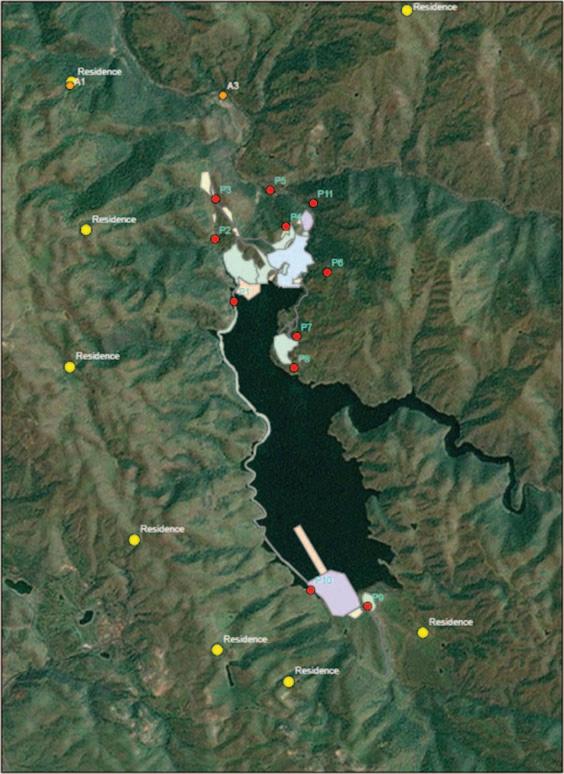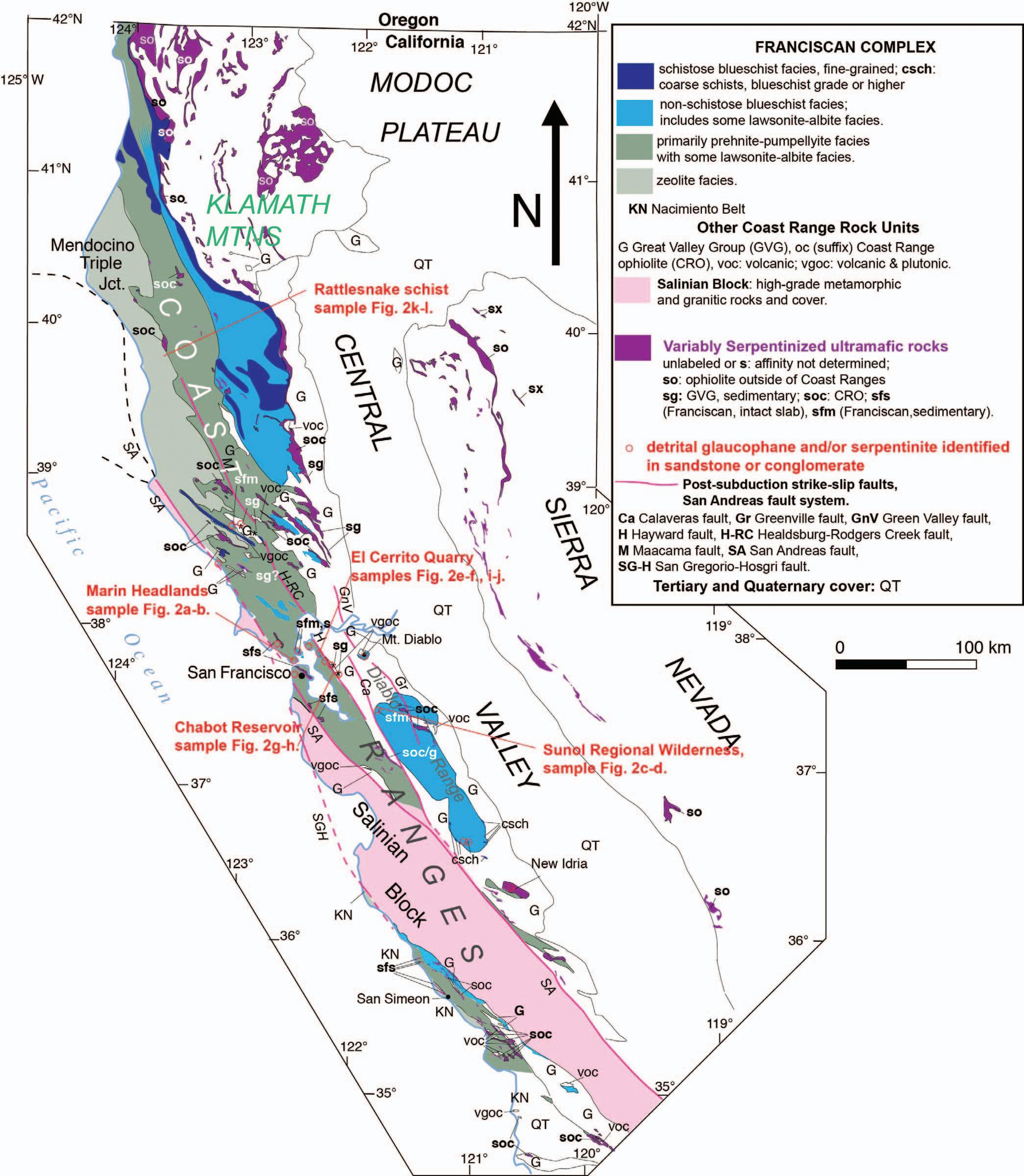Overview of Naturally Occurring Asbestos in California and Southwestern Nevada R. MARK BAILEY* Asbestos TEM Laboratories, Inc., 600 Bancroft Way, Suite A, Berkeley, CA 94710
ABSTRACT Naturally occurring asbestos (NOA) is being discovered in a widening array of geologic environments. The complex geology of the state of California is an excellent example of the variety of geologic environments and rock types that contain NOA. Notably, the majority of California rocks were emplaced during a continental collision of eastward-subducting oceanic and island arc terranes (Pacific and Farallon plates) with the westward continental margin of the North American plate between 65 and 150 MY BP. This collision and accompanying accretion of oceanic and island arc material from the Pacific plate onto the North American plate, as well as the thermal events caused by emplacement of the large volcanic belt that became today’s Sierra Nevada mountain range, are the principal processes that produced the rocks where the majority of NOA-bearing units have been identified. INTRODUCTION California is among the most important states in terms of the extent and diversity of rock units bearing naturally occurring asbestos (NOA). Particularly noteworthy are two serpentine and serpentinized peridotite belts that cover approximately 3,200 km2 (Frazell et al., 2009), including in 42 of 58 California counties. Additionally, areas of serpentine-bearing gravels and soil shed from outcrop exposures are found in large alluvial fans and other drainage systems. Numerous other rock types described in the following paragraph also contain asbestos. An overview of the wide extent of asbestos occurrences is provided in a map compiled by the U.S. Geological Survey (USGS) and the California Geological Survey, as shown in Figure 1 (Van Gosen and Clinkenbeard, 2011). Ultramafic rocks crop out in several distinct geomorphic provinces: (1) the Coast Range, (2) the western Sierra Nevada (referred to as the Sierra Nevada Foothills), and (3) the Klamath Mountains. Additionally, a considerable number of asbestos occurrences
*Corresponding author email: mark@asbestostemlabs.com
not related to ultramafic rocks occur in the Basin and Range/Mojave Desert provinces. A general summary of California rock types known to contain asbestiform minerals and references to documents describing these types of occurrences include the following: Serpentinite (Van Gosen and Clinkenbeard, 2011): chrysotile, tremolite/actinolite Sedimentary serpentine deposits (Wakabayashi, 2011): chrysotile Metabasalt/metagabbro (blueschist) (Erskine and Bailey, 2018): glaucophane, winchite, riebeckite Metabasalt/metagabbro (greenstone) (Sacramento Metropolitan Air Quality Management District, 2004): tremolite/actinolite Meta-granitoids (Buck et al., 2013; Metcalf and Buck, 2015): actinolite, Mg-riebeckite, winchite/richterite Other meta-volcanic (Van Gosen et al., 2004; Wakabayashi, 2011): Na amphibole Fe-rich meta-chert (Van Gosen and Clinkenbeard, 2011): riebeckite, grunerite Iron-ore deposits replacing dolomite (Van Gosen and Clinkenbeard, 2011): tremolite/anthophyllite Meta-carbonates (Van Gosen et al., 2004; Van Gosen and Clinkenbeard, 2011): serpentine, tremolite/actinolite, winchite/richterite Phyllites (sodium-metasomatized) (Albino, 1995): riebeckite Schists (Higgins and Clinkenbeard, 2006): tremolite/actinolite, anthophyllite Shonkinite carbonatite and syenite (Olson et al., 1954): riebeckite Talc deposits (Van Gosen et al., 2004): tremolite, winchite/richterite Colluvium/alluvium and other rock/soil shed off hills containing the above rock types
CALIFORNIA COAST RANGE The Coast Range province is a belt of rocks ∼500 miles long by as much as 100 miles wide trending in a northwest-to-southeast direction and dominated by rocks of the Franciscan Complex (hereafter
Environmental & Engineering Geoscience, Vol. XXVI, No. 1, February 2020, pp. 9–14
9





















